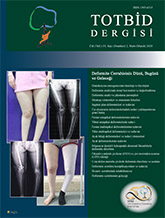
The foot is the most important balance organ that carries the weight of the body and provides walking. Many different deformities are encountered at foot since birth. Some of the deformities are single-plan while some are multiplanar. The deformity must be recognized and corrected by bringing it to the required anatomical position. Orthopedic surgeons should be able to know the angles used in the evaluation of normal foot biomechanics, to be able to define the deformity of the foot and to be able to analyze the appropriate treatment methods biomechanically. In this report, the definition, diagnosis and treatment methods of foot deformity are discussed. The methods to be used in the treatment of congenital (clubfoot and congenital vertical talus, polio, cerebral polsy, meningomyelocele and `Charcot-Marie-Tooth disease`) and acquired (traumatic injuries, osteomyelitis, nonunion or malunion, leg length discrepancy, burns and other soft tissue contractures, gunshot wounds) single plan (equinus, cavus, planus, calcaneovarus, valgus) and multi-planted foot deformities (pes equinovarus) were explained with current literature. Distraction osteogenesis and deformity correction techniques with Ilizarov method and its tricks were reviewed. The advantages, disadvantages, indications and complications of the methods, the difficulties that may be encountered and the solution methods were discussed.